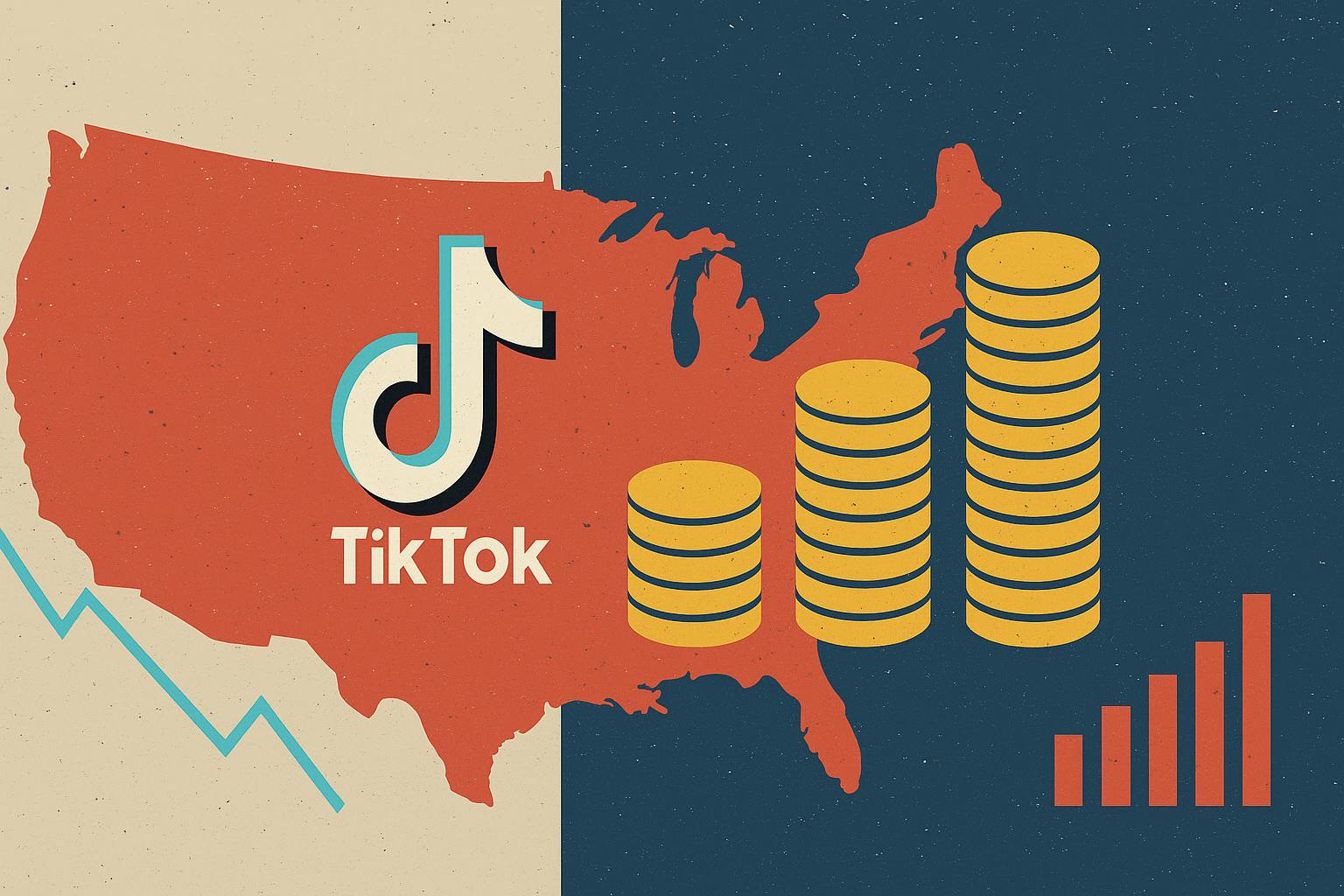At first glance, the facts are unremarkable. The United States accounts for just under 10% of TikTok's global ad impressions. The app's true gravitational pull lies elsewhere: Asia, Europe, Latin America. Indonesia alone boasts more active TikTok users than the U.S. Brazil is nipping at our heels. If this were a standard commercial calculation, you might expect ByteDance—the Chinese parent company—to treat the U.S. as a noisy, politically inconvenient outpost, not a core market worth contorting itself over.
And yet, here we are: legal challenges, export controls, bipartisan legislation, Supreme Court rulings, and national security alarms—just to preserve a sliver of TikTok’s pie chart. So what gives?
The Law, the Sword, and the Oracle
On April 24, 2024, President Biden signed the Protecting Americans from Foreign Adversary Controlled Applications Act (PAFACA), giving ByteDance an ultimatum: divest TikTok's U.S. operations or face a nationwide ban.
ByteDance, of course, resisted. Beijing opposed a forced sale. The U.S. Supreme Court upheld the law. Then came delays, executive orders, and a possible off-ramp. The next deadline looms: September 17, 2025.
It’s an aggressive dance of geopolitics and tech sovereignty. But despite the posturing, TikTok remains live and lucrative in the U.S., for now. ByteDance continues lobbying and courting U.S.-based cloud providers like Oracle (via "Project Texas") to keep the lights on while appearing secure enough to appease regulators.
A Modest Share, a Monumental Stake
Here’s the kicker: while the U.S. commands less than 10% of global impressions, it drives over 34% of TikTok’s global ad revenue. That’s an estimated $5.2 billion out of $15.4 billion in 2025—thanks to a wealthy consumer base and hyper-engaged creators.
More surprising? TikTok’s economic halo effect:
- $24.2 billion in GDP contribution
- 224,000 U.S. jobs supported
- SMBs generating $15 billion in sales via TikTok
- Projected $9.5 billion U.S. ad spend in 2025
- 8.8x revenue lift for advertisers compared to click-only models
- A rapidly growing TikTok Shop economy, with 11.9 million new U.S. social buyers in 2024
That’s not a side hustle. That’s a sector.
Why ByteDance Might Blink
Unlike India (which banned TikTok in 2020) or Canada (which recently forced its exit), the U.S. isn’t just another market. It’s a gateway. TikTok’s global brand prestige, creator economy, and monetization momentum flow downstream from its U.S. credibility. Lose the U.S., and you don’t just lose dollars—you lose status.
Even with Beijing resistant to a sale, ByteDance has more reason to comply than to walk. The U.S. is a cultural multiplier, not just a ledger line.
What If It’s Banned?
If TikTok disappears from American app stores, creators will scramble. Brands will pivot. YouTube Shorts and Instagram Reels will cash in. Some jobs will vanish; others may shift. But the more interesting impact is social:
- A creative platform will go dark at the height of its economic utility.
- A generation of entrepreneurs and entertainers—many from marginalized or underrepresented backgrounds—will lose their fastest-growing outlet.
- U.S. policy will set a precedent: not just for tech regulation, but for the cultural cost of digital nationalism.
If It Isn’t Banned? The Real Stakes
Let’s say TikTok complies or wins a reprieve. What happens then? The platform doesn’t just survive—it expands its role as a central pillar of America’s consumer economy.
- More brands will pivot to TikTok-first marketing strategies, leveraging its algorithmic magic to reach micro-communities with hyper-efficiency.
- Small creators become real businesses, converting views into cart checkouts, thanks to built-in commerce and affiliate tools.
- Live shopping continues to evolve, merging entertainment and impulse purchases in real time.
- And yes, Oprah’s Favorite Things—America’s unofficial holiday gift list—will still be discovered, demonstrated, and purchased entirely within TikTok before the first frost hits.
In a world where attention is currency and algorithms are storefronts, TikTok isn’t just a platform. It’s infrastructure. And its unencumbered presence in the U.S. would signal a broader commitment to innovation, competition, and creator-led commerce.
Conclusion: The 10% Illusion
The U.S. might only be a tenth of TikTok’s user volume, but it’s the lion’s share of its value. This isn’t just about apps or politics. It’s about how Americans connect, shop, learn, and earn. And it’s about how fragile the architecture of the creator economy really is—one policy decision away from disappearing.
Because if no path forward is found, then by Christmas, one of the main digital shelves where the country discovers, celebrates, and buys what it loves—might simply go dark.
In a platform economy, influence isn’t measured in downloads. It’s measured in dollars, in storytelling, and in access.
And TikTok, like it or not, has become one of America’s loudest voices. The question is whether we’re willing to listen—or simply turn it off.


